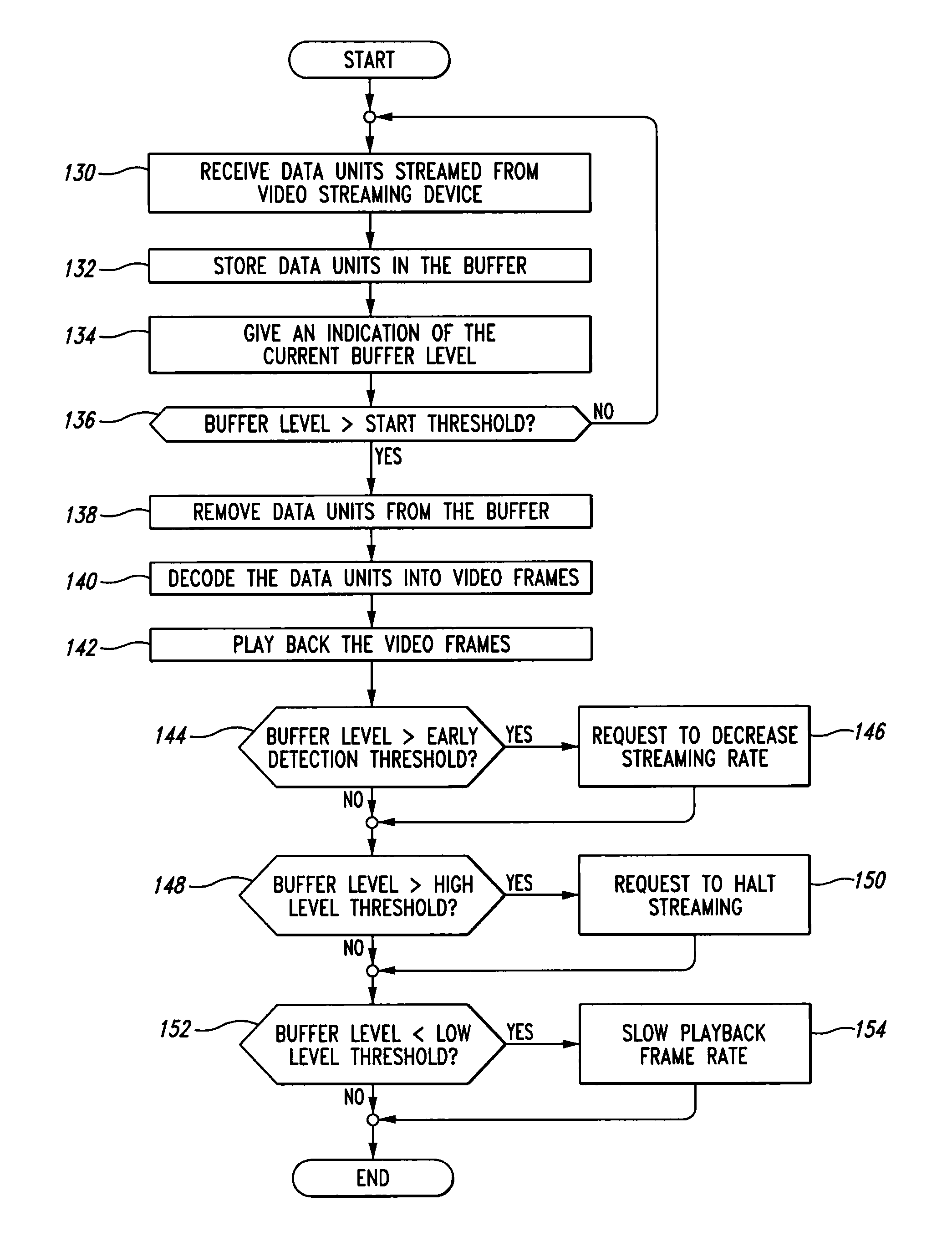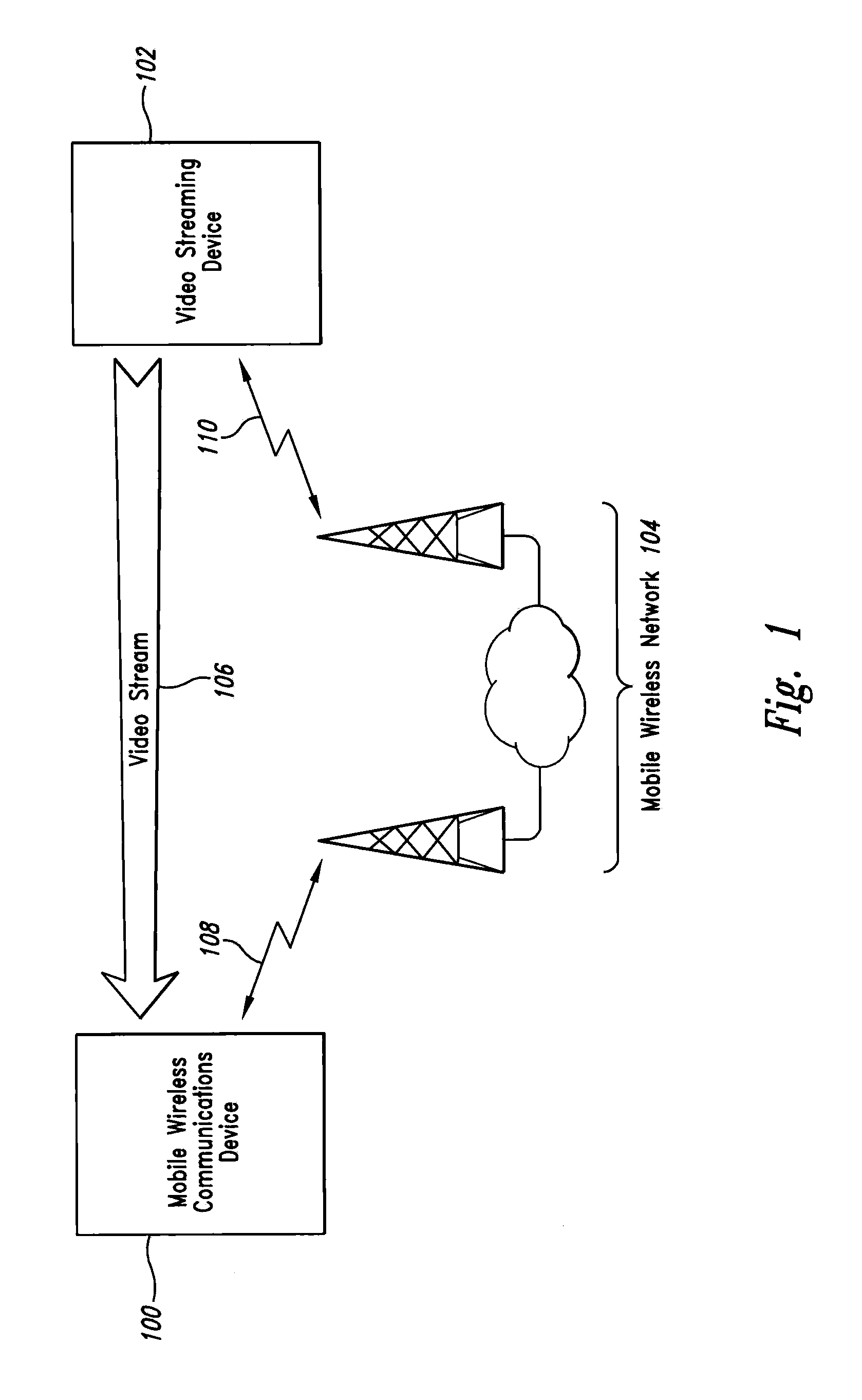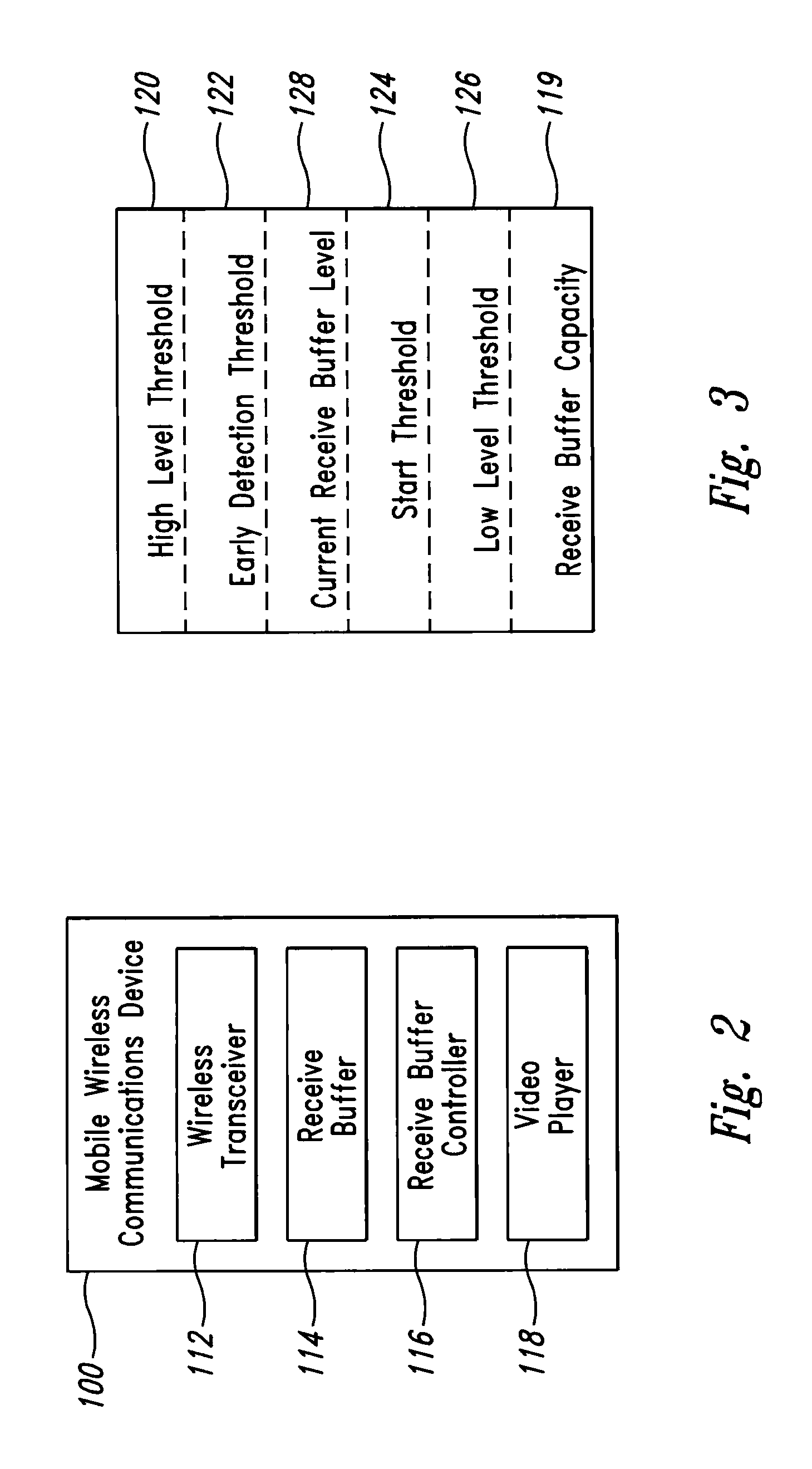Video service buffer management in a mobile rate control enabled network
a video service buffer and mobile rate control technology, applied in the field of mobile wireless devices, can solve the problems of poor video quality when an encoded video is decoded, affecting the quality of the video, and requiring too much bandwidth to transmit in some applications, and requiring too much memory to store or transmit high video rates
- Summary
- Abstract
- Description
- Claims
- Application Information
AI Technical Summary
Problems solved by technology
Method used
Image
Examples
Embodiment Construction
[0015]FIG. 1 shows a mobile wireless device 100 connected to a video streaming device 102 through a mobile wireless network 104 for the purpose of receiving a video stream 106. The mobile wireless device 100 is connected to the mobile wireless network 104 through a wireless channel 108. In some embodiments, the video streaming device 102 is connected to the mobile wireless network 104 via another wireless channel 110. In other embodiments, the video streaming device 102 is connected to the mobile wireless network 104 through wired means. In some embodiments, the wireless channels 108, 110 may be radio channels. In other embodiments, the wireless channels 108, 110 may be infrared or another type of wireless channel. The mobile wireless device 100 can send messages, including requests, to the video streaming device over the mobile wireless network 104 using one or more methods known in the art.
[0016]The video stream 106 is a stream of data units created by encoding a video image. The ...
PUM
 Login to View More
Login to View More Abstract
Description
Claims
Application Information
 Login to View More
Login to View More - R&D
- Intellectual Property
- Life Sciences
- Materials
- Tech Scout
- Unparalleled Data Quality
- Higher Quality Content
- 60% Fewer Hallucinations
Browse by: Latest US Patents, China's latest patents, Technical Efficacy Thesaurus, Application Domain, Technology Topic, Popular Technical Reports.
© 2025 PatSnap. All rights reserved.Legal|Privacy policy|Modern Slavery Act Transparency Statement|Sitemap|About US| Contact US: help@patsnap.com



